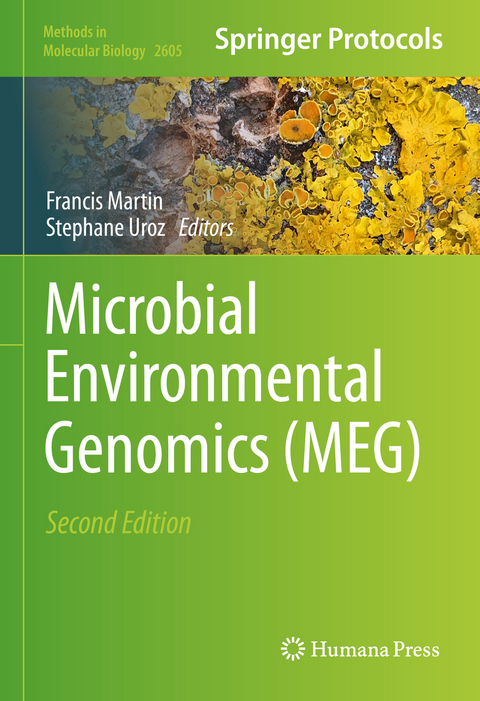
Microbial Environmental Genomics (MEG)
Springer-Verlag New York Inc.
978-1-0716-2870-6 (ISBN)
Chapters cover different organism types (i.e., archaea, bacteria, fungi, protest, microfauna and microeukaryotes) and propose detailed protocols to produce high quality DNA, to analyse active microbial communities directly involved in complex interactions or processes through stable isotope probing, to identify and characterize of new functional genes, to image in situ interactions and to apply bioinformatics analysis tools to complex metagenomic or RNAseq sequence data. Written in the successful Methods in Molecular Biology series format, chapters include introductions to their respective topics, lists of the necessary materials and reagents, step-by-step, readily reproducible protocols, and notes on troubleshooting and avoiding known pitfalls.
Authoritative and cutting-edge, Microbial Environmental Genomics (MEG): Methods and Protocols, Second Edition aims to serve as a primary research reference for researchers in microbiology working to in the expanding field of molecular ecology and environmental genomics.
Metabarcoding Approaches For Soil Eukaryotes, Protists and Microfauna.- Metabarcoding of the three domains of life in aquatic saline ecosystems.- Sample preparation for fungal community analysis by high-throughput sequencing of barcode amplicons.- Characterization of seed mycobiota using culture-dependent and -independent approaches.- Tissue Cultivation, Preparation, and Extraction of High Molecular Weight DNA for Single-Molecule Genome Sequencing of Plant-Associated Fungi.- Analysis of ancient microbial DNA.- Whole Genome Sequencing of bacterial endophytes from fresh and preserved plant specimens.- Investigating the bacterial and fungal communities involved in dead biomass degradation in forest soils.- Stable isotope probing-RNA strategy to study plant/fungus interactions.- Targeted 16S rRNA Gene Capture by Hybridization and Bioinformatic Analysis.- Construction of a transposon mutant library in the pathogen Agrobacterium tumefaciens C58 and identification of genes involved in gall niche exploitation and colonization.- High-throughput screening of fosmid libraries for increased identification of novel N-acyl homoserine lactone degrading enzymes.- Analyzing prokaryotic transcriptomics in the light of genome data with the MicroScope platform.- MycoCosm, the JGI’s Fungal Genome Portal for Comparative Genomic and Multiomics Data Analyses.- Investigating endobacteria that thrive within Mucoromycota.- Confocal laser scanning microscopy approach to investigate plant-fungal interactions.- Visualisation of fungi during wood colonisation and decomposition by microscopy: from light to electron microscopy.
| Erscheinungsdatum | 20.12.2022 |
|---|---|
| Reihe/Serie | Methods in Molecular Biology ; 2605 |
| Zusatzinfo | 71 Illustrations, color; 17 Illustrations, black and white; XI, 365 p. 88 illus., 71 illus. in color. |
| Verlagsort | New York, NY |
| Sprache | englisch |
| Maße | 178 x 254 mm |
| Themenwelt | Naturwissenschaften ► Biologie ► Genetik / Molekularbiologie |
| Naturwissenschaften ► Biologie ► Mikrobiologie / Immunologie | |
| Schlagworte | Agrobacterium • endobacteria • High-throughput sequencing • Stable-Isotope Probing RNA • Tn-Seq |
| ISBN-10 | 1-0716-2870-4 / 1071628704 |
| ISBN-13 | 978-1-0716-2870-6 / 9781071628706 |
| Zustand | Neuware |
| Haben Sie eine Frage zum Produkt? |
aus dem Bereich


